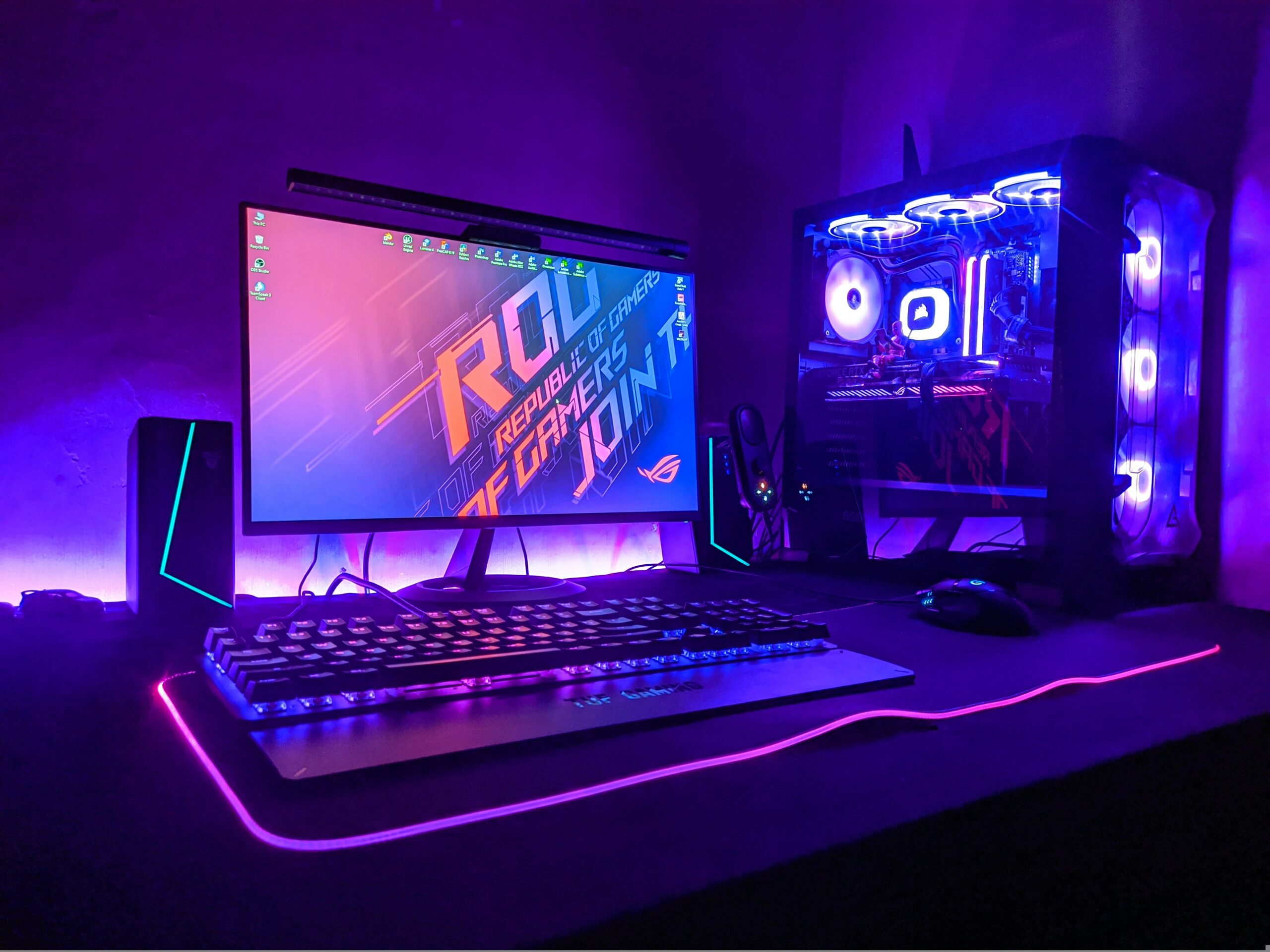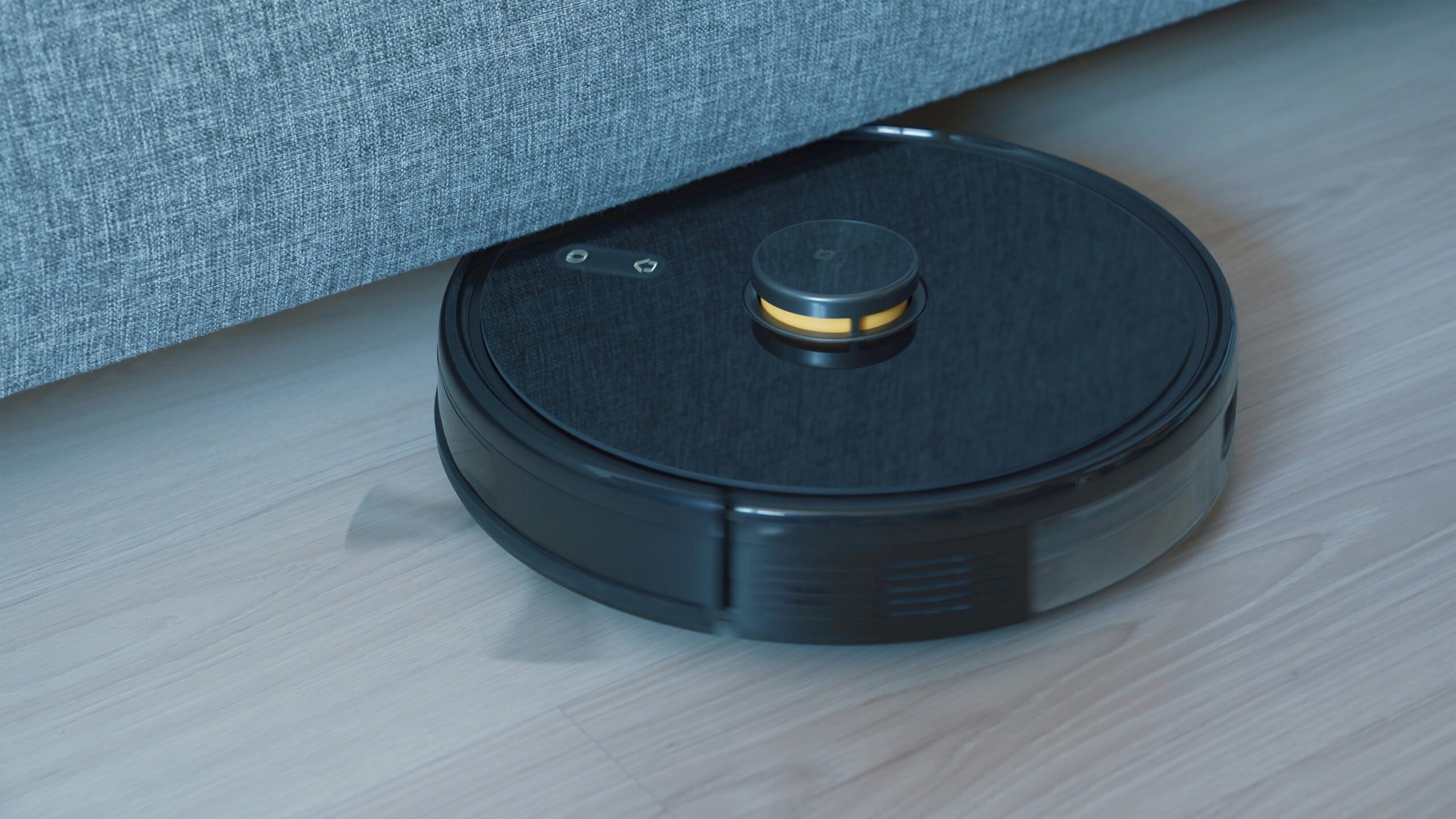1440p is the sweet spot for PC gaming right now – sharper than 1080p without the GPU-destroying demands of 4K. You get noticeably better image quality while still maintaining high refresh rates, which matters more for actual gameplay than cranking everything to ultra settings. The catch? Budget 1440p monitors used to mean compromising on refresh rates, response times, or color accuracy. Not anymore. The market’s flooded with solid options under $300 that deliver 165Hz+, fast IPS panels, and adaptive sync without breaking the bank.
What actually matters: refresh rate (144Hz minimum, 165-180Hz is the current sweet spot), response time (1ms is ideal, anything under 5ms is workable), panel type (IPS for colors, VA for contrast), and adaptive sync (FreeSync works with both AMD and NVIDIA now). We’re covering seven monitors that nail these basics while keeping prices reasonable.
Budget Monitors for 1440p Gaming: Quick Comparison
| Model | Size | Refresh Rate | Panel Type | Price (Amazon) |
| ASUS ROG Strix XG27ACS | 27″ | 180Hz | Fast IPS | $289 – Buy Now |
| KTC H24T7 | 24″ | 180Hz (OC 185Hz) | Fast IPS | $189 – Buy Now |
| Samsung Odyssey G55C | 27″ | 165Hz | VA Curved | $199 – Buy Now |
| BenQ MOBIUZ EX2710Q | 27″ | 165Hz | IPS | $259 – Buy Now |
| SANSUI ES-G25F6Q Pro | 24.5″ | 300Hz | Fast IPS | $229 – Buy Now |
| ViewSonic VX2718-2KPC-MHD | 27″ | 180Hz | VA Curved | $199 – Buy Now |
| KOORUI G2721P | 27″ | 200Hz | Fast IPS | $165 – Buy Now |
Budget Monitors for 1440p Gaming: Top Picks
ASUS ROG Strix 27″ QHD Gaming Monitor (XG27ACS)
Quick Highlights:
- 180Hz refresh rate with Fast IPS panel
- USB-C connectivity with DisplayPort Alt Mode
- HDR400 certification for improved contrast
- ELMB-Sync combines adaptive sync with motion blur reduction
- Price – $289 – Buy Now
The XG27ACS brings ROG features down to a more accessible price point without gutting what matters. That 180Hz refresh feels noticeably smoother than 144Hz panels, and the Fast IPS tech keeps response times at 1ms while maintaining the color accuracy IPS is known for. The USB-C port is genuinely useful if you’re switching between a gaming PC and a laptop. One cable handles video, data, and charging up to 15W.
HDR400 isn’t going to blow your mind like proper HDR600+ panels, but it does add some punch to highlights in supported games. The ELMB-Sync feature lets you run adaptive sync and motion blur reduction simultaneously, which older monitors couldn’t do. At this price point, you’re paying a bit more for the ROG branding, but you’re getting a well-rounded monitor that doesn’t compromise anywhere critical.
Pros
- 180Hz refresh with genuine 1ms response
- USB-C simplifies cable management
- ELMB-Sync works better than expected
- Solid build quality with adjustable stand
Cons
- HDR400 is more marketing than feature
- ROG tax adds $30-50 vs competitors
- OSD navigation could be more intuitive
- No built-in speakers
KTC 24 Inch Gaming Monitor 180Hz (H24T7)
Quick Highlights:
- 24″ 1440p for higher pixel density
- 180Hz (overclocks to 185Hz)
- Fast IPS with HDR400
- Height adjustable stand included
- Price – $189 – Buy Now
The H24T7 takes an interesting approach. 24 inches at 1440p gives you noticeably sharper text and images compared to 27″ at the same resolution. If you sit close to your monitor or prioritize clarity over screen real estate, this works. The 180Hz panel overclocks to 185Hz, which is meaningless in practice but shows the panel’s got headroom. Fast IPS delivers good colors and viewing angles without the washed-out blacks of older IPS tech.
With this one, you’re getting current-gen specs at prices that used to buy 1080p 144Hz monitors a few years ago. The HDR400 certification means it can handle HDR signals but don’t expect real HDR performance. The stand adjusts for height and tilt, which budget monitors often skip. For compact setups or people who want maximum sharpness, this nails the basics without wasted features.
Pros
- Excellent pixel density at 24″ 1440p
- Overclocks to 185Hz for free performance
- Adjustable stand on a budget monitor
Cons
- 24″ feels cramped for some users
- HDR400 is barely functional
- Lesser-known brand means limited support
Samsung 27-Inch Odyssey G55C Series
Quick Highlights:
- 1000R curve for immersive gaming
- VA panel with excellent contrast (2500:1)
- 165Hz with 1ms MPRT response
- HDR10 support with FreeSync Premium
- Price – $199 – Buy Now
The G55C brings Samsung’s aggressive 1000R curve to budget territory. That curve matches your natural field of view, which genuinely helps with immersion in first-person games and racing sims. The VA panel delivers contrast ratios around 2500:1, way better than IPS for deep blacks and pop in darker scenes. The 165Hz refresh is plenty for most gaming, and the 1ms MPRT response time (not GtG) handles fast motion without smearing.
VA panels have trade-offs. Viewing angles aren’t as good as IPS, and dark scene transitions can show some ghosting. But for the $220-270 price, you’re getting a curved display that would’ve cost $400+ a couple years ago. FreeSync Premium works great with both AMD and NVIDIA cards, and the HDR10 support actually does something thanks to VA’s better contrast. The stand doesn’t adjust for height though, which is annoying at this price.
Pros
- 1000R curve adds real immersion
- VA contrast makes dark scenes pop
- Solid value for curved display
- FreeSync Premium eliminates tearing
Cons
- No height adjustment on stand
- VA ghosting in dark transitions
- Viewing angles limited by panel tech
- 165Hz vs 180Hz isn’t huge but noticeable
BenQ MOBIUZ EX2710Q Gaming Monitor 27″ QHD
Quick Highlights:
- Built-in 2.1 speaker system (2W x 2 + 5W subwoofer)
- 165Hz IPS with HDRi technology
- DCI-P3 90% color gamut coverage
- Full ergonomic stand with USB hub
- Price – $259 – Buy Now
The EX2710Q positions itself as an all-in-one solution with built-in 2.1 speakers that don’t completely suck. They’re not replacing a proper speaker setup, but they’re way better than typical monitor speakers and save desk space. BenQ’s HDRi tech adjusts HDR settings based on content type with different profiles for gaming, cinema, and general use. The IPS panel covers 90% of DCI-P3, which means vibrant colors without oversaturation.
Truth be told, you’re paying for convenience features on top of solid gaming specs. The 165Hz refresh and 1ms response handle competitive gaming fine, though it’s not pushing boundaries. The full ergonomic stand (height, tilt, swivel, pivot) and USB hub add genuine utility. This makes sense if you want one monitor that does everything decently instead of needing external speakers and a USB hub cluttering your desk.
Pros
- 2.1 speakers actually usable for casual listening
- HDRi adjusts for different content types
- Full ergonomic adjustments included
- USB hub simplifies connectivity
Cons
- Premium price for mid-tier specs
- 165Hz when competitors offer 180Hz+
- Speakers still can’t match dedicated setup
- Heavier and bulkier than competitors
SANSUI 24.5 Inch QHD Gaming Monitor 300Hz (ES-G25F6Q Pro)
Quick Highlights:
- 300Hz refresh rate at 1440p
- Fast IPS with 1ms response
- 130% sRGB color gamut
- Dual HDMI 2.0 + dual DisplayPort 1.4
- Price – $229 – Buy Now
The ES-G25F6Q Pro targets competitive gamers with that 300Hz refresh rate. At 1440p, hitting 300fps consistently requires serious GPU horsepower (think RTX 4070 Ti or better in esports titles), but the headroom means you’re future-proofed. The Fast IPS panel keeps colors accurate while delivering the response times competitive gaming demands. Having four video inputs (2x HDMI, 2x DP) lets you connect multiple systems without constantly swapping cables.
The 24.5″ size keeps pixel density high and reduces the eye movement needed to scan the whole screen. Competitive players prefer this. At this price point, the 300Hz spec seems almost too good, which makes the lesser-known SANSUI brand a bit of a gamble. But if you’re chasing maximum refresh rate without spending $400+, this delivers. The 130% sRGB coverage means oversaturated colors out of box, which you’ll want to calibrate down for color accuracy.
Pros
- 300Hz at budget pricing is unreal value
- Four video inputs for multi-system setups
- 24.5″ size ideal for competitive gaming
- DP cable included (most charge extra)
Cons
- Unknown brand means uncertain longevity
- Oversaturated colors need calibration
- Eye care features are basic
- No USB-C or hub functionality
ViewSonic VX2718-2KPC-MHD 27 Inch Curved 1440p Gaming Monitor
Quick Highlights:
- 180Hz refresh with 1500R curve
- VA panel with FreeSync Premium
- Eye Care tech reduces blue light
- Budget-friendly curved option
- Price – $199 – Buy Now
The VX2718 is ViewSonic’s budget curved offering, and at $200-240, it undercuts the Samsung G55C while delivering similar core specs. The 1500R curve is less aggressive than Samsung’s 1000R, which some people prefer. It’s still immersive without feeling like you’re inside a tunnel. The 180Hz refresh beats the G55C’s 165Hz, and the 1ms response time (MPRT) handles motion adequately for the price.
VA panel trade-offs apply here too. Great contrast for dark scenes, but viewing angles and dark-level response aren’t IPS-tier. ViewSonic’s Eye Care features reduce flicker and blue light, which matters during long sessions. The stand is basic (tilt only), and build quality feels plasticky, but functionality doesn’t suffer. For curved gaming on a tight budget, this delivers most of what the Samsung offers for $30-50 less.
Pros
- Curved display under $250
- 180Hz beats many budget competitors
- FreeSync Premium works great
- ViewSonic’s warranty support is solid
Cons
- 1500R curve less immersive than 1000R
- Basic stand with tilt only
- VA ghosting present in dark scenes
- Build quality feels cheap
KOORUI 27″ Gaming Monitor 200Hz (G2721P)
Quick Highlights:
- 200Hz refresh with Fast IPS
- DCI-P3 95% color coverage
- HDR400 with adaptive sync
- Dual HDMI 2.0 + DisplayPort 1.4
- Price – $165 – Buy Now
The KOORUI G2721P punches way above its price point with 200Hz refresh and 95% DCI-P3 color gamut. That color coverage matches monitors costing twice as much, and the Fast IPS panel means you’re getting vibrant, accurate colors with 1ms response times. The 200Hz refresh splits the difference between 180Hz and 240Hz options. You probably won’t notice 20Hz differences, but it’s nice headroom.
KOORUI is another budget brand gaining traction, and this monitor shows why. The specs are legitimate (not marketing fluff), and user reviews consistently report solid performance. FreeSync Premium and G-Sync compatibility handle both AMD and NVIDIA cards. The stand adjusts for tilt and height, and VESA mounting is standard. At this price, it’s hard to find legitimate complaints beyond the no-name brand concern.
Pros
- Incredible value
- 95% DCI-P3 rivals premium monitors
- 200Hz refresh for smooth gameplay
- Height-adjustable stand included
Cons
- Unknown brand longevity questions
- HDR400 barely functional
- No USB-C or hub features
- Limited customer support infrastructure
Conclusion
Budget 1440p gaming has gotten ridiculously good. You don’t need to spend $400+ to get 165Hz+, fast response times, and decent color accuracy anymore. The sweet spot sits around $200-250 where monitors like the KOORUI G2721P and ViewSonic VX2718 deliver nearly everything expensive panels offer, just without premium features like USB-C, fancy RGB lighting, or top-tier build quality. If you’re gaming on a mid-range GPU (RTX 4060 Ti, RX 7700 XT), pairing it with a $200-250 1440p monitor makes way more sense than spending $500 on a display your GPU can’t fully drive anyway.
Also Read:









